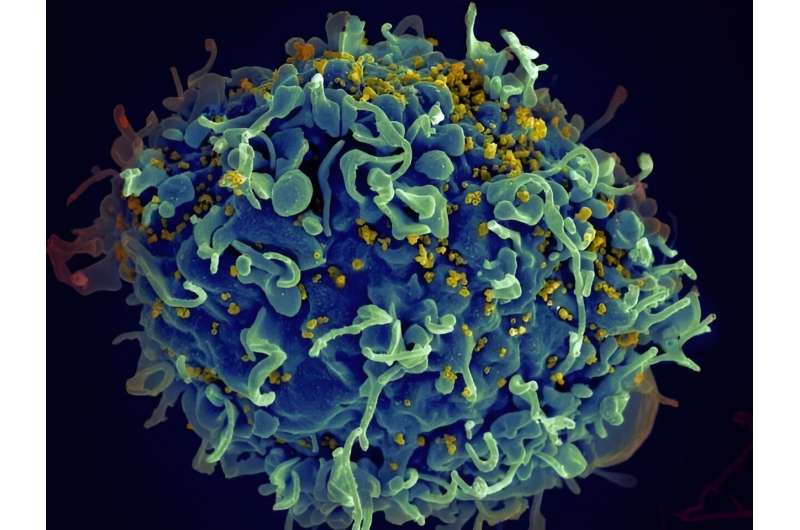This article has been reviewed according to Science X's editorial process and policies. Editors have highlighted the following attributes while ensuring the content's credibility:
fact-checked
trusted source
proofread
Study finds changing distribution of HIV-1 subtypes in Sweden

A new study has shown that the distribution of HIV-1 subtypes in Sweden has changed a lot since the beginning of the AIDS epidemic. This is largely due to the migration of already infected people to Sweden. The study focused on people who migrated from Ukraine, so that the care can be adapted to their needs. The results provide important information for future analysis and treatment.
The authors of the study, published in Eurosurveillance include Anders Sönnerborg, and Maarten Van De Klundert from the Infectious Diseases and Dermatology Unit at the Department of Medicine, Huddinge (MedH), as well as Dr. Anna Weibull-Wärnberg at the Infectious diseases clinic, Karolinska Universitetssjukhuset.
What did you want to address in this study and why?
We wanted to monitor changes in HIV-1 diversity in Sweden. It is important to follow the spread of variants, such as the subtype HIV-1A6. This subtype is common in eastern part of the World Health Organization European Region and should be monitored because it may easily become resistant to innovative long-acting injectable HIV medication. We focused on people who had migrated from Ukraine so the care for them can be adjusted to their needs.
What have we learned from this study?
The distribution of HIV-1 subtypes in Sweden has changed a lot since the beginning of the AIDS epidemic and has become very diverse, mostly due to migration of already infected people to Sweden. Currently, HIV-1A6 is the sixth most common subtype. People from Ukraine are not always aware that they are infected, and the majority of Ukrainian people living with HIV are infected with HIV-1A6.
What are the implications of your findings for public health?
It is important to perform HIV sequence analysis to observe the spread of new subtypes. People originating from Ukraine should be encouraged to be tested for HIV. Standard care using Swedish protocols proved to be effective for the treatment of Ukrainian people living with HIV. The high percentage of individuals infected with subtype HIV-1A6 should be taken in account when considering therapy with long-acting injectable HIV medication.
More information: Anna Weibull Wärnberg et al, The molecular epidemiology of HIV-1 in Sweden 1996 to 2022, and the influence of migration from Ukraine, Eurosurveillance (2023). DOI: 10.2807/1560-7917.ES.2023.28.48.2300224




















